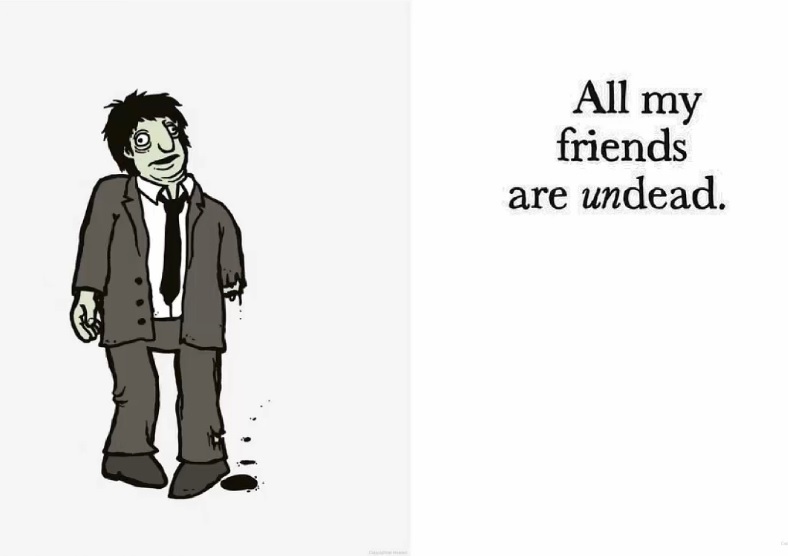Picturebooks are an endless resource for developing all skills. They can entertain and teach something new. It seems that picturebooks are created only for children and your adult students will tell you that these books are childish. However, in this article, we are going to spill the beans of what picturebooks are and how to use them in class with adult group and individual students.
What is picturebook?
A picturebook is a book that consists of both text and pictures. Pictures are not just illustrations, they are a part of the plot. The reader analyzes that interaction between text and illustration and that helps develop visual intelligence. Moreover, it helps to look for meaning in the visual. The story is organised in such a way that even the title, the book cover, text, pictures, overturn of the pages can combine in one continuous story.

Why should we use them with adults?
- Picture books appeal to more learning styles than any other format. It is read out loud for audible learners. It is written and illustrated for visual learners. Some of them even ask readers to interact with it physically for kinesthetic learners.
- With their supporting images (which are boundless support for reading comprehension, developing speaking and in-class discussion), picturebooks are not just aimed at developing students’ reading skills, they bring adults sense of achievement once they have read the whole (!) book in English.
Moreover, illustrations facilitate the input, so students can rely not only on the context but images as well.
- Picturebooks can improve motivation, as far as even adults need some change to routine and kind of entertainment.
- In case you feel that students feel exhausted, a picturebook is a great way to turn the attention to something different from the textbook.
- Picturebooks can bring in a new topic for discussion in case you have discussed many topics with your students and you lack new ideas.
- Picturebooks let adults relax and bring in some informal environment and relaxed atmosphere to your classes.
Here are some points that you should take into account while choosing a picturebook:
- the level of the book (it should be a bit challenging for students or correspond to their level);
- the vocabulary and grammar (whether it is connected with what you study in class);
- the main message of the book;
- the quality of illustration and their relation to the content;
- the authenticity of the material.
What can you do with a picturebook in the lesson?
I will give some examples of activities that can be done with a picturebook on the example of “All My Friends Are Still Dead” (you can see video-review of the book here).
N.B. Every page of the book is filled with black humour and provokes existential thoughts. It is NOT recommended for reading with students who lack a sense of humour.
Before reading:
- Speculate on the name of the book. For example, you can ask your student what he or she can see on the cover and what the title means. In case you work with a group of students, have a pyramid discussion (you can read about this collaborative technique in the article).
- Predict, who or what (apart from the dinosaur) can say that their friends are still dead and why.
While reading:
- Look at the picture before reading the text. Ask students what this person or animal can say. Read the phrase and discuss why it is said. In case you work with a group, they can read the book in pairs and read the text on the page in turns, however, still predicting it before reading.
- After discussing the illustration and the text near it, think of other possible utterance applicable to the situation.
After reading:
- Discuss with students, which page was the most striking one and why.
- As a homework or freer practice of the lesson, ask students to choose a page and write a short story that precedes the saying in the picture.
- In the context of the book, you can discuss an idea of consumerism and even futility of existence.
The list of great books you can read with your adult students:
The Pilot and the Little Prince: The Life of Antoine de Saint-Exupéry, by Peter Sis;
All My Friends are Dead, by Avery Monsen and Jory John;
Fly, Pigeon, Fly! by John Henderson, Julia Donaldson, Thomas Docherty;
Lighter Than My Shadow, by Katie Green;
The Heart and the Bottle, by Oliver Jeffers;
New Big House, by Debi Gliori;
Slim and Miss Prim, by Robert Kinerk, illustrations by Jim Harris;
Jumanji, by Chris Van Allsburg;
Charlie and the Chocolate Factory, by Roald Dahl;
Voices in the Park, by Anthony Browne.
Picturebooks differ, and the proportion of pictures and text can be different. Consequently, you can use pictures as support for retelling the story. Illustrations of the picturebooks can be also used separately as a resource for description and discussion.






 Вероника Аветисян
Вероника Аветисян 
 Маргарита Аветисян
Маргарита Аветисян 


